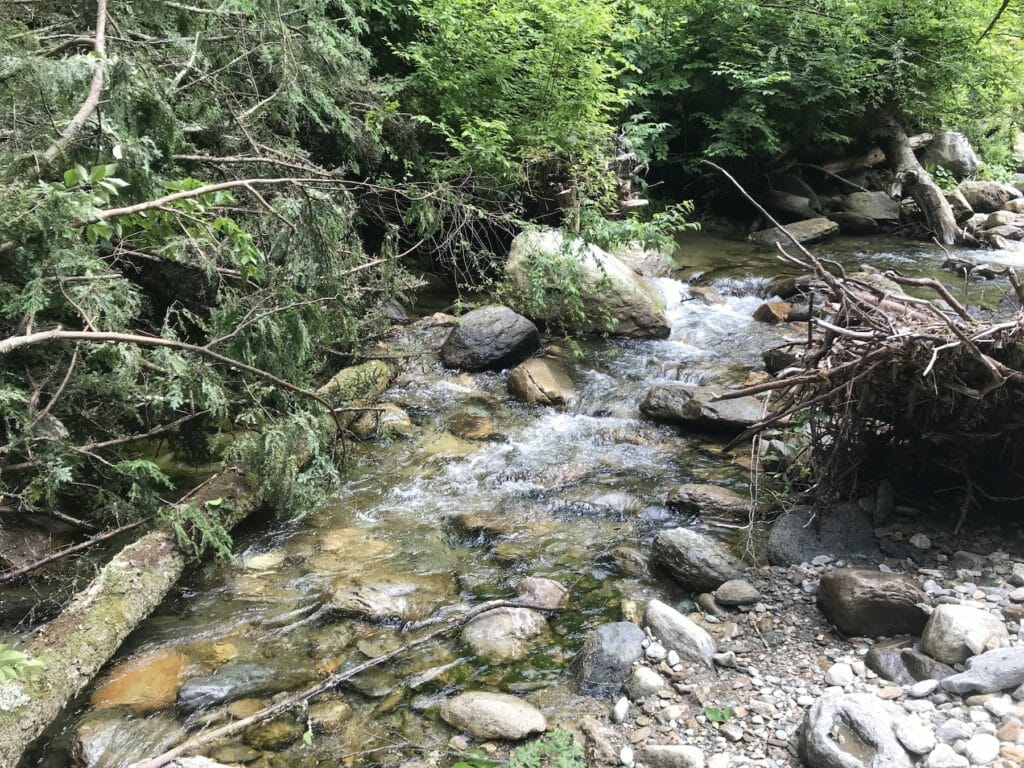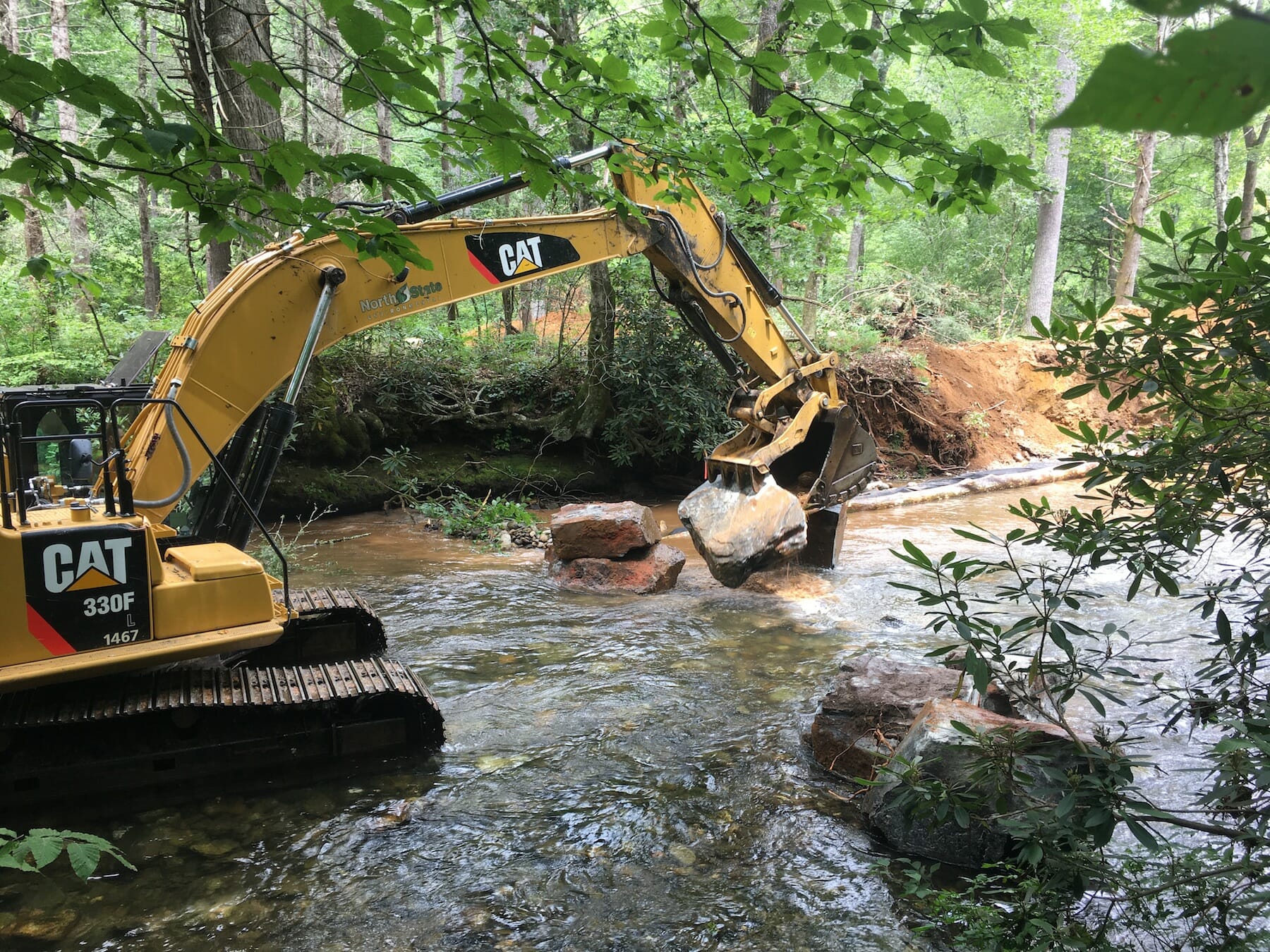When Trout Unlimited and the U.S. Forest Service team up for a reconnection project next year in the Ottawa National Forest in Michigan, the price tag will top $80,000.
In terms of the project’s total cost, a single $5,000 contribution might seem like it’s not that big of a deal. But that grant from the Trout and Salmon Foundation, like others from the longtime TU partner and supporter, carries out-sized importance.
“Those kinds of donations from private foundations help considerably to get the fundraising process going,” said Jeremy Geist, TU’s Great Lakes stream restoration manager and the staff leader of the planned project on Trout Creek, a tributary in the Ontonagon River watershed. “We can use it as seed money to show that there is interest and investment in a project.
“It then can help us leverage the larger sums of money from bigger programs and funders.”
The Trout and Salmon Foundation has been making these kinds of important impacts for TU projects for nearly 50 years to achieve its stated mission: “We enable and accelerate the work of local conservation organizations, landowners, and government agencies by providing grants to restore cold water fish habitat.”
Since its founding in 1972, the foundation has contributed to 175 TU projects in 27 states, said Dave James, one of the organization’s directors. The organization’s investment has topped $700,000, a hefty sum for an all-volunteer group that’s working with a modest endowment.
“We typically award 10 to 12 grants a year,” said James, a longtime Vermonter. “The average is $5,000.”

The foundation has awarded 150 grants to TU chapters, with the balance going directly to TU field staff projects.
Many of the chapter grants help fund larger projects headed by TU field staff but in which chapter support is a key element. That’s the case with the project on Ontonagon Creek, which is funded primarily by the Forest Service and is slated to be completed in the spring of 2021.
The grant went to Chicago’s Elliott Donnelley chapter, which has many members interested in TU’s restoration work in Michigan’s Upper Peninsula, according to Geist.
Donnelly himself was one of the founders of the Trout and Salmon Foundation.
Today, the foundation’s 14 directors oversee its grant program. Directors are assigned to review one or two grant applications each. They also monitor the selected projects’ progress and completion.
“I’m actually going out this afternoon to look at a project TU recently completed on Tunnel Brook here in Vermont,” James said. “It’s very gratifying to be able to be able to go out to see the results of the work.”
TU’s Erin Rodgers headed up that project to enhance habitat on the creek with the addition of large wood. The Trout and Salmon Foundation also contributed funding to a large wood project on Chittenden Brook, another of Rodgers’ projects.
In North Carolina, a Trout and Salmon Foundation grant helped with a recently completed stream restoration project on a 600-foot-long section of the Davidson River, a popular angling destination near the Blue Ridge Parkway.
TU’s Rocky River and Pisgah chapters teamed up for the project, which also was supported by a grant from TU’s popular Embrace A Stream grassroots funding program.
The section of river is just downstream from the North Carolina Wildlife Resources Commission’s Pisgah Center for Wildlife Education, a popular destination for visitors who drive the scenic 276 highway that winds up the Pisgah Ridge to the Blue Ridge Parkway from Brevard, N.C.
In 2016, a Clemson University study of the section funded by the Pisgah TU chapter and the Forest Service showed reduced diversity and abundance of aquatic insects that are important food for trout and hellbenders, a rare and state-protected salamander.
Excavators installed boulders to create deeper pools and swift water runs that provide more diverse and improved habitats. Log and rock revetments were created to stabilize eroding riverbanks. Designated angler access points were constructed to protect shoreline vegetation and reduce sedimentation. This fall, TU volunteers will plant beneficial plants in the work area to complete the project.
“The Davidson River project was a perfect fit for the Trout and Salmon Foundations’ mission of enabling and accelerating the work of local, community-based conservation organizations that are doing shovel-ready watershed restoration projects,” said Kenny Mendez, the Trout and Salmon Foundation director who oversaw the grant. “This project had all the right elements: valuable wild trout habitat, three different volunteer labor sources providing hundreds of hours of man-hours, funding from multiple sources, a thoughtful plan, and a previous track record of similar projects within the watershed.”
Because of extensive volunteer involvement, the project’s cost was a modest $28,000. Of that, $3,500 was from a Trout and Salmon Foundation grant — yet another example of the leveraging power of the organization’s financial support.
“There’s a strong alignment between TSF’s funding vision and the restoration work done by local TU chapters,” Mendez added. “I see the Foundation’s financial support as seed funding to allow community-based organizations like TU Chapters to get restoration projects off the ground.
“I know I speak for our other board members who will be eager to support TU chapter projects like these in the future.”



